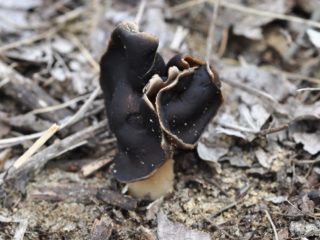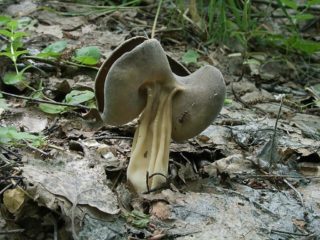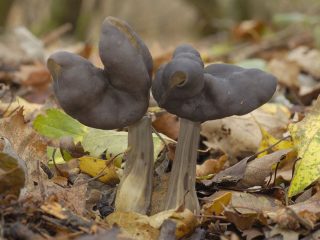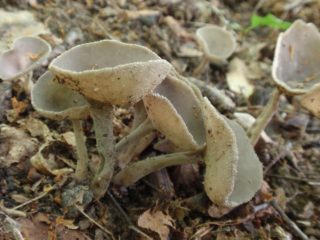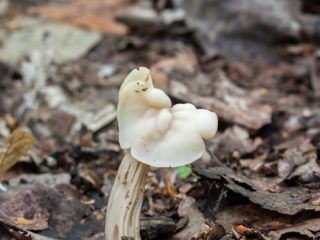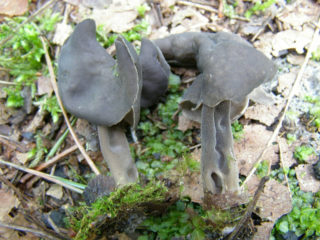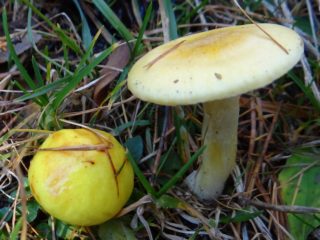Content
Elastic lobe represents the genus Helvella, the eponymous family of the Helwellian order Peciia. The second name is elastic helwella, or elastic. The species is classified as conditionally edible.
How elastic blades look like
The mushroom has an unusual structure: a straight cylindrical leg, a brown cap of a specific shape, which looks like a lobe, saddle or potato tuber. At a young age, it has a light yellowish color, however, as it grows, it acquires a brownish-gray tint.

A brown or brownish-beige hat has two compartments, its diameter is 2-6 cm
The light flesh has a thin and brittle structure, despite the name of the species.
White leg of a classic cylindrical shape, the same thickness at the top and bottom. In some specimens, it is curved, up to 5-6 cm in height, with a diameter of no more than 1 cm.
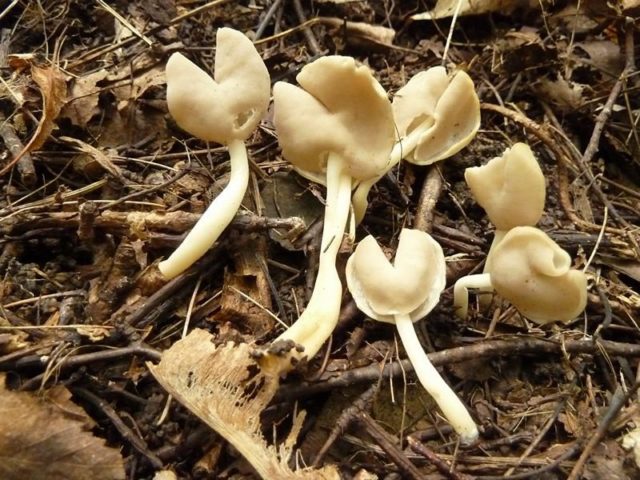
The inside of the leg is completely hollow, which makes the mushroom easy to break
Spore white powder with smooth oval spores.
The elastic vane is clearly presented in the video:
Where elastic lobes grow
The variety can be found most often in areas of deciduous and mixed forests. The period of active fruiting begins in mid-summer and lasts until the end of September. Often, the elastic lobe grows in damp places, in a favorable climate it spreads in the form of large colonies. The main areas are Eurasia, as well as North and South America.
When the mushrooms form a group, the twisted caps of the fruiting bodies bend in different directions. Mushroom pickers believe that representatives of the Gelwell family serve as "pointers" by which one can navigate in the area.
Is it possible to eat elastic paddles
Since the mushroom belongs to the conditionally edible category, it is allowed to use the fruit bodies for culinary purposes only after preliminary heat treatment. In some sources, you can find information that the species is completely inedible. This is due to the unpleasant and bitter taste of the pulp, which is why mushroom pickers bypass the found specimens.
False doubles
The elastic lobe has characteristic external features, which makes it easy to distinguish it from other varieties. Fruiting bodies can only be confused with black lobe (Helvella atra), characterized by a darker shade of the cap and a folded, slightly ribbed leg.
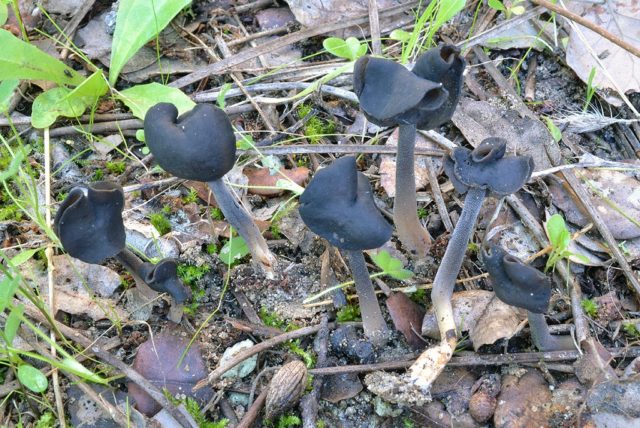
This is a rare representative of the Helwell family, often grows in large colonies on the territory of deciduous and coniferous forests
The main distribution area is the regions of North and South America and Eurasia. The base of the fruiting body is made up of a stem and a cap. Black lobe is unsuitable for human consumption, it belongs to the inedible group.
Conclusion
Elastic lobe belongs to the fourth, conditionally edible, category of mushrooms, it represents the Helwell family. It can be easily distinguished by the brown color of the cap of a specific shape, as well as by the thin white leg. The variety grows in coniferous and mixed forests, bears fruit from mid-summer to late September.Most often it can be found in Eurasia and America. Fruit bodies can be eaten only after heat treatment. The species has only one twin - an inedible black lobe, which can be identified by the darker color of the cap.
